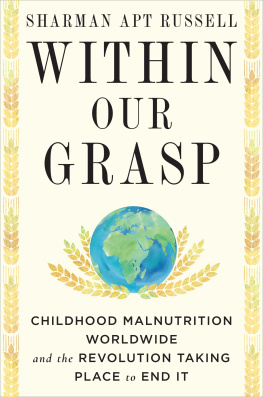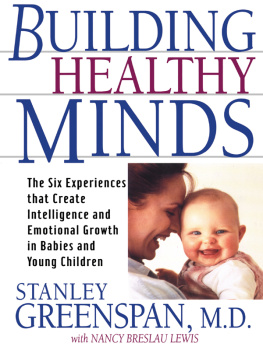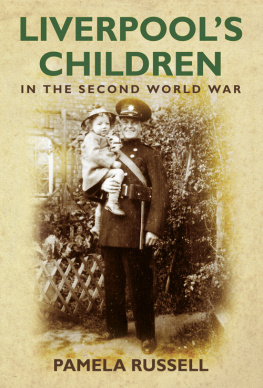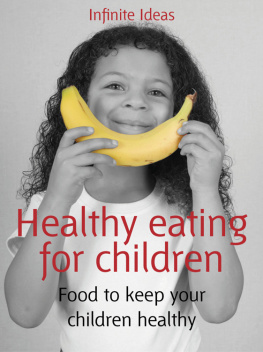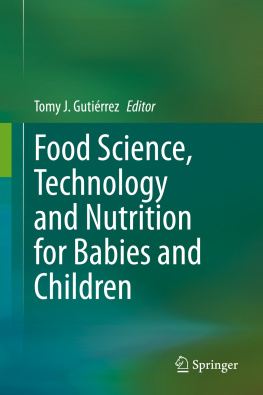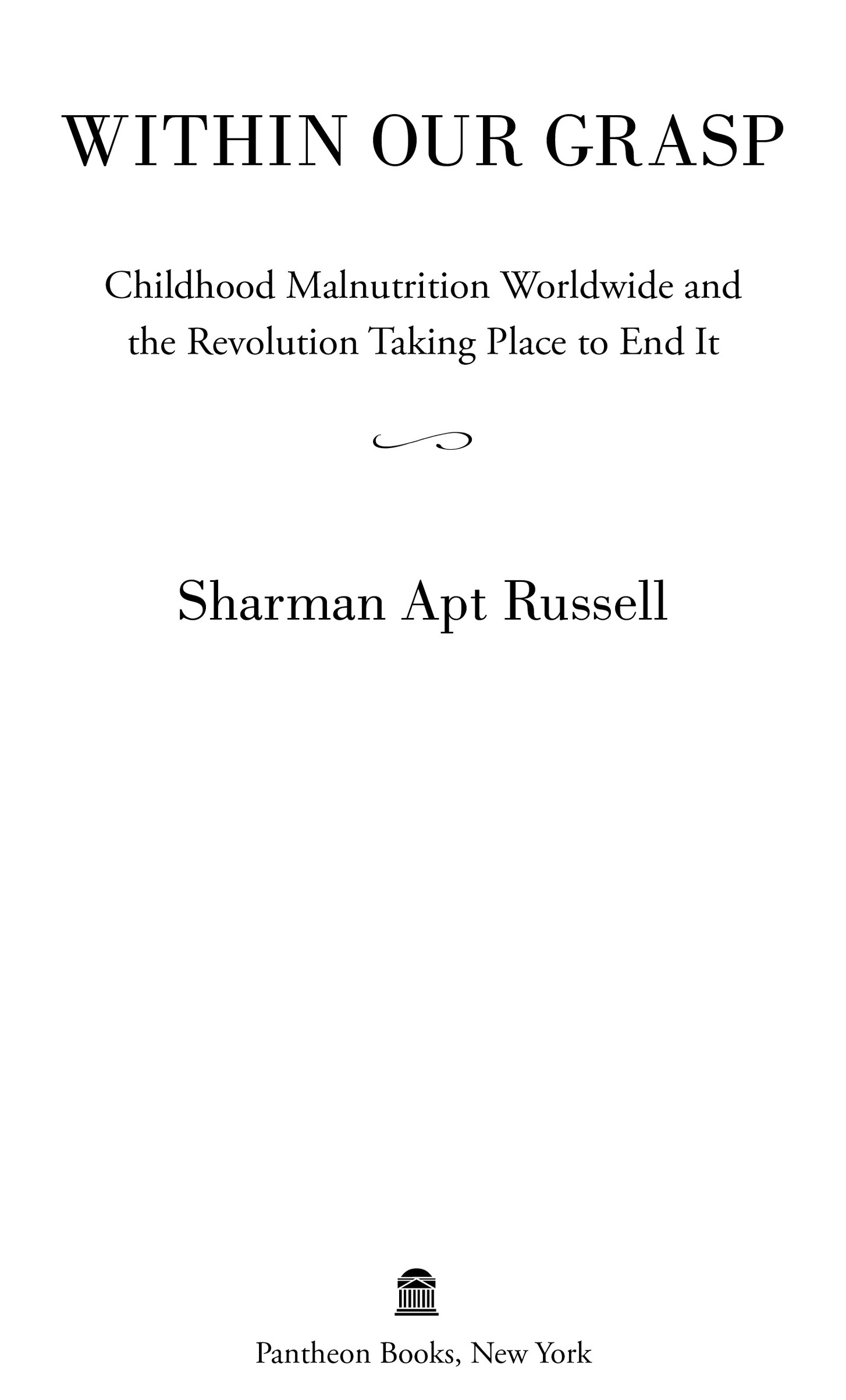Also by Sharman Apt Russell
Nonfiction
Diary of a Citizen Scientist
Standing in the Light
Hunger
An Obsession with Butterflies
Anatomy of a Rose
When the Land Was Young
Kill the Cowboy
Songs of the Flute Player
Fiction
Knocking on Heavens Door
Teresa of the New World
The Last Matriarch
For Young Readers
The Humpbacked Flute Player
Copyright 2021 by Sharman Apt Russell
All rights reserved.
Published in the United States by Pantheon Books, a division of Penguin Random House LLC, New York, and distributed in Canada by Penguin Random House Canada Limited, Toronto.
Pantheon Books and colophon are registered trademarks of Penguin Random House LLC.
Library of Congress Cataloging-in-Publication Data
Name: Russell, Sharman Apt, author.
Title: Within our grasp : childhood malnutrition worldwide and the revolution taking place to end it / Sharman Apt Russell.
Description: First edition. New York : Pantheon Books, 2021. Includes bibliographical references and index.
Identifiers: LCCN 2020043676 (print). LCCN 2020043677 (ebook). isbn 9781524747244 (hardcover). isbn 9781524747251 (ebook).
Subjects: LCSH : Malnutrition in children. Malnutrition in childrenPrevention. Malnutrition in childrenMalawi. Malnutrition in childrenMalawiPrevention. Food reliefMalawi.
Classification: LCC RJ 399. M 26 R 87 2021 (print) | LCC RJ 399. M 26 (ebook) | DDC 362.19639dc23
LC record available at lccn.loc.gov/2020043676
LC ebook record available at lccn.loc.gov/2020043677
Ebook ISBN9781524747251
www.pantheonbooks.com
Cover images: (world) keiko takamatsu / iStock / Getty Images; (wheat) ulimi / DigitalVision / Getty Images
Cover design by Sarahmay Wilkinson
ep_prh_5.7.0_c0_r0
To my family
CONTENTS
prologue
This blue marble spinning in darkness
I was eighteen years old in 1972 when astronauts in space took a photograph of the Earth, this blue marble spinning in darkness. Suddenly we were aware of our absolute dependence on this planet, oddly aware that, yes, this was our home. Like many young people in the environmental movement, I thought then of the Earth as my mother. How we are shaped in her womb. How we drink from her every day. Eat from her every day. How she nurtures us with so many gifts, so much beauty. How she loves every one of us.
Later, as I had children of my own and as the human population in the world doubled and would soon triple, I replaced the image of mother with that of lover. We are a new skin covering the Earth with our need, our greed, our tenderness. We are the storytelling animal unraveling and re-stitching forest and field, our human consciousness interpenetrated, mated with the Earth. It is too easy to joke about marital problems. Instead I give the metaphor its due: we are the bride of the world and we are the groom.
And now, as I wonder what the Earth will be like in the middle and end of this century and beyondas I look at decisions we are making and not makingnow I think of the future as our child. And this catches at my heart. This makes me feel something new.
A child dies from hunger, and the suffering of this one child is enough to catch our heart. We look at the photo of that little girl, her thin face and too-bright eyesthe way she points every bit of her dying self at the cameraand we think: This isnt hard. Ill take her home. Whats in the refrigerator? Ill make some soup.
What we can hardly fathom is the physical and mental stunting of nearly one in four of the worlds children due to a lack of food or nutrients. One in four. Almost a third of the children in much of Africa and Southern Asia. More than 144 million stunted children under the age of five, with another 47 million children wasted or threatened by weight loss or failure to gain weight. These numbers are too big. Perhaps we are sitting at a computer desk or reading over breakfast. Our shoulders loosen. Our arms and legs relax. Theres nothing we can do.
Stunting is a medical term, defined as two deviations below the height standards set by the World Health Organization. The vast majority of healthy children, no matter their race or ethnicity, follow the same growth patterns in their first five years. Genetic potentialwhat makes one person tall and another shortis expressed later in childhood. The first two years of life are when the brain and body have high demands for nutrients, and stunting usually happens at this time. It often starts before birth. Stunted children are not likely to catch up on their growth later. A stunted one-year-old will become a stunted ten-year-old and a stunted adult.
The number of hungry children in the world increases due to war and conflict, especially when families must flee their homes. Hunger increases because of climate shocks like extreme drought and erratic weather patterns. Hunger increases during outbreaks of disease such as COVID-19, with the devastating effects of that pandemic continuing today.
Even so, the majority of stunted children in the world are not the result of particular conflicts or shocksas horrific and damaging as they have been and still are. The reality is bigger than any one event. In some countries, populations have lived with the suffering of childhood stunting for so long that the problem has become almost invisible. Short height is seen as the norm, not a consequence of poor nutrition. But a stunted adult is not the norm and is now at risk for a range of physical and mental problemsimpaired organ function, impaired immune system, impaired cognition. Stunting is associated with higher rates of diabetes, heart disease, stroke, obesity, anxiety, and learning disabilities. Ending the misery of childhood malnutrition would have enormous consequences. Most malnourished children do not diealthough some do, some 3 million a year. The rest endure a lifetime of diminished potential. They do less well in school. They do less well at work. They are sick more often. Almost certainly, they continue to be poor, since childhood malnutrition is both a cause and a result of extreme poverty.
Nourished children, on the other hand, have the opportunity to grow up to be more energetic and productive adults. Ending childhood malnutrition means that one-quarter of the next generation could learn better and engage more in society. Together, that generation could promote gender and racial equality. Together, they could face the challenges of global warming and disease. What would that future look like? We could find out, because the past fifty years of research have taught us surprising and remarkable things about the human bodyspecifically, how to prevent and treat childhood malnutrition. We have the knowledge, and we have the motivation, knowing that childhood stunting is an environmental and an economic concern, as well as a humanitarian one.
The future that is our child is the future of a hotter Earth and a degraded environment, a future of increasing shocks and the need for greater resilience. Ending childhood stunting is neither a digression nor a distraction from that urgency. We have failed so far to find the collective will to slow down greenhouse gas emissions and prevent apocalyptic changes to life on Earth. We have failed to acknowledge the human interdependence that laces this Earth. Perhaps our thinking has been too small. Perhaps we have been too narrowly focused on parts of carbon dioxide per million, on numbers and statistics. Perhaps our resolve will only be ignited by a larger story of who we are and who we want to be.

